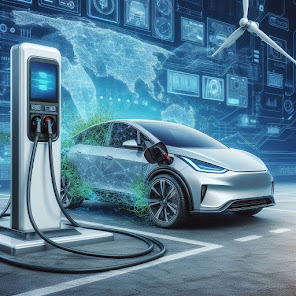Electric vehicles (EVs) are the future of transportation, with countries around the world vying for dominance in this rapidly growing market. China has emerged as a leader, leveraging government support and control over the EV battery supply chain. This blog explores how China's strategic moves have given it an edge over other nations, particularly the United States, and the implications for the global automotive industry.
China's Strategic Advantage
Government Support and Policies :
China's government has been instrumental in propelling the country's EV market to the forefront. Significant subsidies, favorable policies, and stringent regulations have driven rapid consumer adoption of electric vehicles. These measures have made EVs more affordable for Chinese consumers, contrasting sharply with the high costs in the United States, which hinder consumer adoption and impact sales for automakers like Ford.
Dominance in Battery Supply Chain :
Chinese companies control critical aspects of the global EV battery supply chain, including key minerals, refining processes, and component manufacturing. This control extends to innovative battery technologies like Lithium Iron Phosphate (LFP), which reduces reliance on expensive minerals such as nickel and cobalt. This dominance raises concerns about global competition, human rights, and environmental impacts, but it undeniably strengthens China's position in the EV market.
Impact on Global Markets
Challenges for US Automakers :
The high cost of EVs in the United States poses a significant barrier to widespread adoption. American automakers are struggling to compete with the affordability and efficiency of Chinese EVs. The US is aiming to develop its own battery industry to reduce reliance on Chinese batteries, but this effort faces challenges in affordability and meeting domestic demand by 2030.
European Market Concerns :
China's EV market has also raised alarms in Europe. Companies like Zika, a luxury EV brand, are increasing exports, backed by substantial state subsidies. This has led to concerns about unfair competition. European automakers face intense competition as Chinese manufacturers, like BYD, surpass Tesla in production. Despite internal challenges such as abandoned EVs and bankrupt companies, China's EV industry continues to innovate and attract first-time buyers with tax breaks and competitive pricing.
Innovations and Future Trends
Self-Driving Vehicles :
China is also leading in the development of self-driving EVs. Startups like WeRide are pioneering advanced technologies, aiming to enhance safety and driving experience. Estimates suggest that self-driving vehicles could dominate Chinese roads in the next 15 years, primarily for car-hailing apps, potentially replacing traditional taxis.
Opportunities for Entrepreneurs :
The burgeoning EV market presents numerous opportunities for entrepreneurs. Battery recycling, data-driven mobility solutions, and innovative vehicle form factors are promising areas. Established players highlight the need for a holistic approach to support the EV transition, addressing policy, cost, and consumer adoption challenges.
Entrepreneurial Journeys in the EV Sector
Building an EV Infrastructure :
The journey of entrepreneurs in the EV industry often begins with renewable energy projects, transitioning into EV charging infrastructure. Building a massive EV charging ecosystem and emphasizing the advantages of EVs over traditional fuel vehicles is crucial. This includes securing financing, leasing cars, and considering battery life and replacements.
Cost and Efficiency :
Operating costs for EVs can be significantly lower than traditional vehicles, influenced by charging methods. Entrepreneurs must navigate the process of setting up EV fleets, securing financing, and understanding investment returns from renewable energy sources like solar power plants.
Sustainable Growth and Innovation :
Scaling sustainably and attracting young talent is vital for long-term success in the EV industry. Entrepreneurs face challenges related to policy alignment, cost reduction, and the importance of marketing strategies. The discussion on battery components, assembly quality, and thermal management underscores the technical aspects crucial for performance and efficiency.
Where INDIA stands in this EV Race
India's EV market faces challenges due to reliance on lithium imports, which hampers self-sufficiency in battery production. However, the Indian government introduced the FAME l and FAME ll schemes to promote the adoption of electric vehicles, offering subsidies and tax benefits to encourage their purchase and establish necessary charging infrastructure and aim to enhance EV adoption by reducing costs, creating a virtuous cycle that legitimizes the market and fosters industry growth. Despite higher initial purchase costs, the Total Cost of Ownership (TCO) for EVs is lower than that of internal combustion engine (IC) vehicles due to reduced fuel and maintenance expenses. These subsidies significantly lower the TCO, making EVs more affordable and competitive. To overcome market challenges, India needs more EV brands, better component manufacturing, improved charging infrastructure, and accessible financing options.

Very informative 💯
ReplyDelete